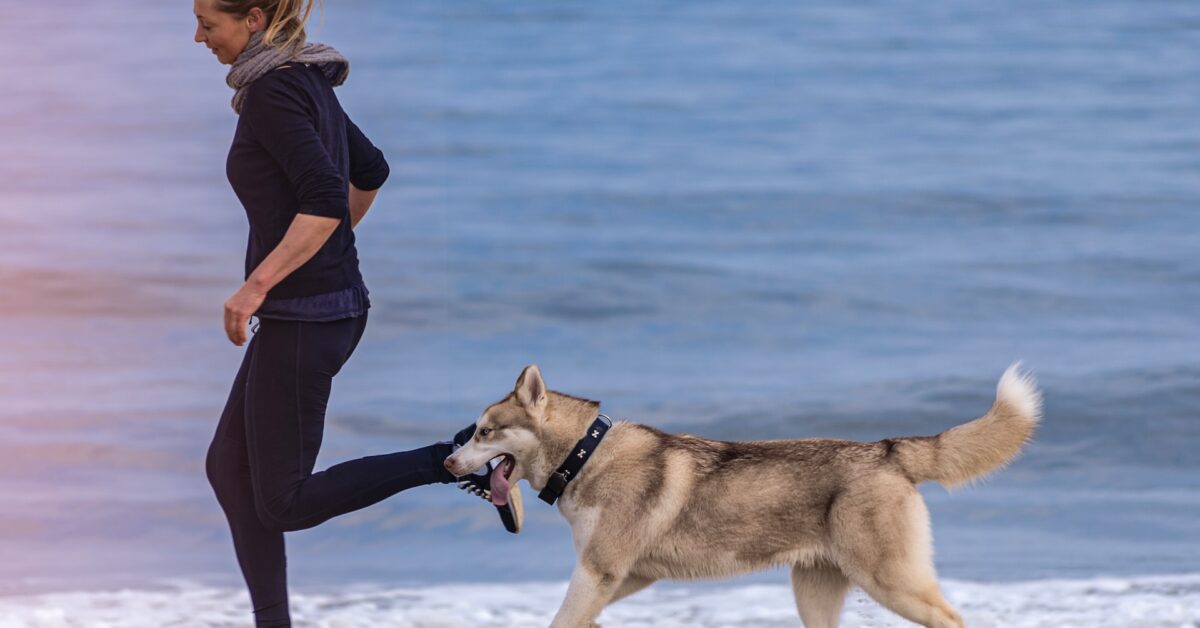While the answer to this question will vary based on breed and age, all dogs need daily exercise. This can be through walks, running, playing with other dogs or using an agility course.
When starting to exercise your dog, begin slowly and observe their response. If they are panting excessively, pacing or staggering after an activity, reduce the time and intensity of their exercise.
Puppies should be walked every day
Many pet owners should know that puppies still need daily exercise and how to balance that with other daily activities. They want their pups to burn off that energy that can lead to destructive behaviors like chewing and digging, but they also don’t want them overworking their growing bones and joints. And because young dogs often don’t show signs of being overexercised, it can be not easy to know when they have had enough.
While avoiding overexerting young puppies is important, all dogs who can walk benefit from regular walks. Generally, it’s a good idea to aim for about 30 minutes of walking daily for most dogs. However, it’s important to note that puppies need shorter periods of exercise because they have limited stamina, and their bones are still developing.
Walking is an excellent form of exercise for dogs because it’s low impact, strengthens their bones and joints quickly, and helps control their weight. It’s also a great way to provide them with socialization, mental stimulation, and enrichment. Plus, it can help prevent serious health issues like obesity and arthritis in older dogs. Dogs who don’t get enough exercise can develop various health problems, including obesity, joint pain, and heart disease. Daily walks are an easy and inexpensive way to keep your puppy healthy.
Puppies should be played with every day
While it may be tempting to let puppies run around and play all day, this isn’t good for their mental or physical health. Exercise, especially with training and socialization, is an important part of puppy development. It allows them to expend pent-up energy and helps them build the cognitive skills they need to develop into happy, well-adjusted adult dogs. It also allows you to spend time with your puppy and bond with them.
Generally, it’s recommended that you increase the length of walks and exercise sessions slowly over days and weeks. Puppies’ bones are still growing, and too much exercise can damage them. In addition, large and giant breeds are prone to joint problems such as hip dysplasia and osteochondritis dissecans, and too much exercise can hasten their onset.
Another factor that influences how much exercise a puppy needs is its age. As they age, they’ll be able to handle more intense activities and long walks. However, it’s important to remember that they’ll need rest between exercises even as they get older.
In general, it’s recommended that puppies get five minutes of exercise every month they’re aged. However, avoiding activities that strain a puppy’s bones is important, like jogging or prolonged hiking. Instead, focus on playing with your puppy and taking frequent breaks to let them recharge.
Puppies should be trained every day
Puppies often only show signs of being over-exercised once they are very tired, so it’s important to watch them carefully on walks and ensure they get time to rest. If they start panting heavily, limping or moving slower than usual, it’s time to head back home.
Dogs need daily physical activity to burn off calories, maintain muscle mass and reduce stress. Dogs can become bored without exercise and often use destructive behaviors to occupy themselves. They can also develop health problems like obesity and arthritis if they are not physically active enough.
While the amount of physical activity a puppy needs will vary by breed and age, all puppies must exercise daily. Getting too little exercise will result in obesity and poor muscle tone, while too much exercise can damage a growing puppy’s joints.
A good rule of thumb is to give a puppy about five minutes of exercise for each month of their age, except for high-impact activities such as running or jumping. These exercises can cause injury to developing bones and cartilage tissue.
A good training routine for puppies can be as simple as teaching them basic obedience commands, such as “sit” and “down.” You can also incorporate daily training into your walking and playtime by using toys and treats to encourage your pup’s attention and focus.
Puppies should be socialized every day
Puppies are little bundles of energy, and if they do not have an outlet for their energy, it may manifest in destructive behaviors like chewing or digging. Exercise can harness this energy while still allowing puppies to be playful. It also helps them develop social skills, making it an essential part of puppy training.
The exercise a puppy needs depends on several factors, including age and breed. A general rule is that a puppy should be given one session of five minutes of walking every month of their age, up to twice per day. This allows them to build their walking stamina without overworking their developing joints.
As part of their daily routine, puppies should be exposed to various sights, sounds, and smells. This can include walks down busy streets, allowing them to encounter multiple people and dogs. They can also visit the veterinarian to be vaccinated and checked for health issues.
The young brain of a puppy is most capable of processing and accepting new experiences between the ages of 3 and 14 weeks, so this is an ideal time to expose them to as many things as possible. It is important to avoid over-stimulation and remove a puppy from an activity if it shows signs of fatigue.


